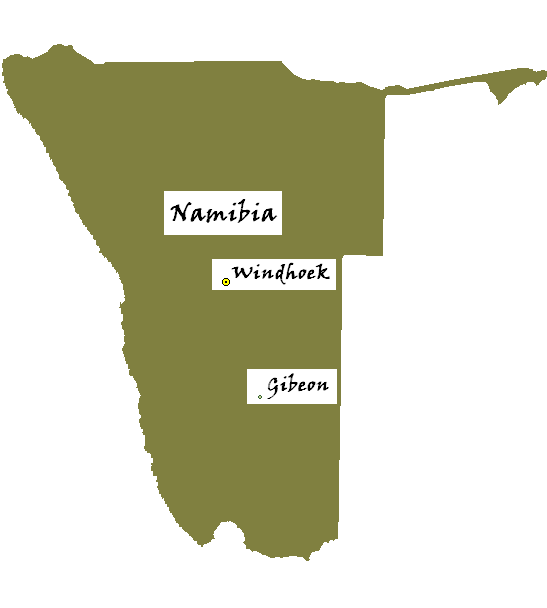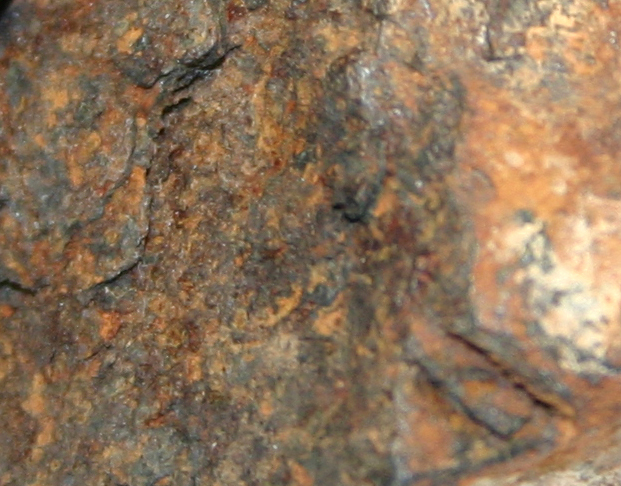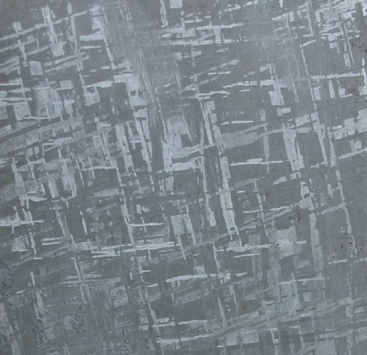

The first Westerner who found this meteorite was the English Army Captain, Explorer Sir James E. Alexander. The local inhabitants the Kalahari Desert, Nama-tribesmen used it to make tools and weapons out of it.
 Picture
on the right side:
enlargement of the molten surface.
Picture
on the right side:
enlargement of the molten surface.
 In the
left side picture: the Widemnnstätten figures, different parts of Iron separated from
eachother can be seen by the unaided eye.
In the
left side picture: the Widemnnstätten figures, different parts of Iron separated from
eachother can be seen by the unaided eye.
The Widmannstätten
figures.
With scientistical
methods the age of the meteorite is stated to be four billion years. It has
been formed about at the same time as our solar system. This research has been
supported by the theory of the creation of the Widemannstätten figures. The
figures are present in the most of the Gibeon-meteorites, which are classed as
ochtaedrites.
When the Gibeon octaedrite is sawn, cut, polished and etched, there will be the lamellae-system, the trigon shaped figures visible on the surface. These figures has still not been synthetically crated in laboratory environments by Man, and that is why they prove the authentity of the material. The Widemannstätten figures are formed in almost zero-gravity conditions and extremely cold temperatures, where the cooling has been one degree in every one thousand years. The creation of the figures has lasted alltogether 800 million years. Due to the figures, unique gemstones can be cut outof the stone.

Picture on the right side: a photo from Windhoek where there is a large Meteorite collection. All the newly found pieces are very important to Namibia, and there is export regulations, which protect the natural cultural treasure.
Pictures in this article may be reproduced for educational purposes, and credit shall be given to: Mr.Casimir von Schantz (F.G.A.)